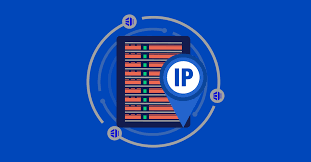The internet’s growth has long relied on IPv4, the standard addressing system that connects devices worldwide. However, IPv4’s limited number of addresses has led to exhaustion, creating challenges for expanding networks. This shortage drives the need for IPv6, a new protocol designed to provide a vastly larger address space and improved connectivity. Migrating to IPv6 offers benefits like better security, faster routing, and support for modern technologies. For businesses, delaying this conversion IPv4 to IPv6 risks falling behind in innovation and efficiency.
Value of Conversion IPv4 to IPv6
The concept of conversion IPv4 to IPv6 is worthwhile due to the increasing demand for internet-connected devices. IPv4 is no longer in use because it has very few addresses that can cater to the digital world that is growing dynamically. IPv6 has many more addresses so that many more devices can go online without difficulty. This modification also enhances network productivity and security, which makes businesses have less difficulty in managing their systems.
The implementation of IPv6, on the other hand, future-proofs a given company to be better performing and support scaled growth. In general, the change to IPv6 is inevitable to promote modern technology and provide high, stable, and safe networks on the internet.
Step-by-Step Guide for Conversion IPv4 to IPv6
Step 1: Assess Your Current Infrastructure
Start by carrying out a detailed inventory of the devices that are dependent on IPv4. Test out your existing hardware and software network in terms of IPv6 compatibility. Find out any legacy systems that may be critical to the process of migration. This evaluation forms a base for a smooth transition, as it will point out any obstacles well in advance.
Step 2: Staff Training and Stakeholder Awareness
Train your Information Technology personnel and other concerned parties about the concepts of IPv6 and the benefits involved in migrating to IPv6. Ensure that there is clear communication of goals, schedules, and anticipated impacts. Training your team makes them all on the same line and with the ability to manage technical and operational requirements at any stage of migration.
Step 3: Plan the Transition Strategy
Develop a proper migration strategy for the conversion IPv4 to IPv6. Look at a dual stack: enabling IPv4 and IPv6 at the same time. Apply managing techniques as per-time fixes to protocols. NAT64 and DNS64 IPv6-only clients can access IPv4-only services using techniques.
Step 4: Upgrade Network Hardware and Software
When you are buying IPv4 block, make sure you upgrade it to software and hardware network. Routers, firewalls, switches, operating systems, and firmware should be updated to support IPv6. Make sure that every constituent meets IPv6 standards and protocols. The upgrade is done early to avoid problems of compatibility at the time of installation and in the future. This also helps to meet the future network requirements.
Step 5: Test the Environment
Carry out testing of IPv6 configuration before complete production. Apply such diagnostic tools as Wireshark and Test-IPv6.com to check the functionality and identify any possible errors. Extensive testing reduces interference, and everyone can have confidence towards the new network.
Step 6: Install IPv6
Carry out a phased roll-out, such as beginning with a pilot sample or segment. Observe the network during deployment. One should monitor network performance and network connectivity carefully during deployment. A smooth growth process will establish a stable transition throughout the company, as the issues that were unseen at the start of the expansion will be discovered and fixed.
Step 7: Post-Migration Monitoring
Perform regular audits when you lease IPv4 address. Also examine logs to audit the state of the network. Train personnel more on what would be considered best practices on use of IPv6 and optimize configurations where necessary. Continuous watchdogging keeps the network safe, effective and responsive to new technological needs.
Best Practices to Follow for IPv6 Migration
The shift to IPv6 is possible through best practices, which are secure and smooth. First, mission-critical systems should be given priority so that interruptions to essential services do not take place. These are systems to start with so that risks can be minimized.
Monitor with IPv6-compliant performance software to monitor activity and spot any problems easily. This does this by ensuring network health during the migration. At an early stage, prevent these threats through security measures, e.g., IPSec and new firewall policies to protect information. Security must never be an afterthought. This is equally important when renting IPv4 addresses.
Lastly, have open communication with the clients and partners. Make them aware of the migration schedule and the changes that can be expected. Open communication helps instil trust and eliminate misunderstanding. These steps make the migration of IPv6 effective, super secure and fruitful.
Unlock the Value of Your Addresses with IPV4 TradeHub
Ready to upgrade to IPv6 but not sure what to do with your IPv4 assets? IPV4 TradeHub makes it simple to sell, lease, or trade your unused IPv4 blocks, turning dormant addresses into real cash. Our expert team handles the end-to-end process so you can focus on modernizing your network while maximizing your ROI. Start your IPv6 transition today, profit from IPv4 tomorrow.
